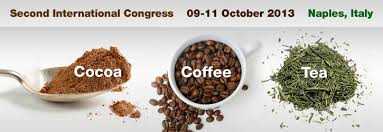Glabasnia A.1, Mestdagh F.1, Moser M2., Thomas E3., Folmer B3., Leloup V1., Blank I1. 1 Nestlé Product Technology Center, Orbe, Switzerland 2 Nestlé Reseach Center, Lausanne, Switzerland 3 Nestlé Nespresso, Lausanne, Switzerland E-mail: arne.glabasnia@rdor.nestle.com For many consumers, coffee and in particular espresso represents a pleasurable experience thanks to its unique aroma balance, taste and mouthfeel. Describing a coffee profile is today still made by an expert panel, even though in the past decades significant progress has been made in understanding coffee flavour on a molecular level.
More than 800 aromatic substances have been identified in coffee, and the ones mainly responsible for the aroma, the so-called key impact compounds have been elucidated by gas chromatography– olfactometry and omission experiments (1). In recent years, knowledge about taste compounds in coffee has been significantly improved, and several classes of taste active components have been identified by activity-guided fractionation of coffee brews (2).
The main limitation of these studies is caused by the complex interactions between aroma molecules, taste compounds and the coffee matrix. To overcome this problem studies were performed to correlate analytical data and sensory responses in an untargeted approach (3).
The study, however, focussed on aroma compounds only without considering taste compounds.
To further strengthen our knowledge of sensory-analytical correlations GC/MS and LC/MS methods have been used to screen and quantify important aroma and taste compounds in a multi-targeted approach. A total of around 100 volatile and non-volatile compounds were monitored as well as important flavour precursors such as chlorogenic acids or amino acids, representing the state-of-the- art in coffee flavour chemistry.
Both methods have been applied to a series of commercial Nespresso coffees, extracted from a commercial Nespresso machine, of which the sensory profile was analysed monadically by an expert panel. The obtained set of analytical and sensory data was then subject to multivariate-data analysis in order to find correlations between key sensory attributes and volatile and/or non-volatile markers. A predictive model for the sensory profile based on the analytical data and sensory responses is proposed.
The obtained results are one step further towards unravelling the complexity of coffee flavour chemistry and to better link analytical data to the sensory profile. The gained knowledge is also of high importance to identify the gaps that need to be closed to fully understand sensory responses on a molecular level.
References
[1] Blank I.; Sen A.; Grosch W., Potent odorants of the roasted powder and brew of arabica coffee. Zeitschrift fuer Lebensmittel-Untersuchung und -Forschung 1992, 195 (3), 239-245. [2] Frank O., Zehentbauer G., Hofmann T., Bioresponse-guided decomposition of roast coffee beverage and identification of key bitter taste compounds, Eur Food Res Technol. 2006, 222, 492-508
[3] Lindinger C.; Labbe D.; Pollien P.; Rytz A.; Juillerat M. A.; Yeretzian C.; Blank I., When machine tastes coffee: Instrumental approach to predict the sensory profile of espresso coffee. Analytical Chemistry 2008, 80 (5), 1574-1581.
















